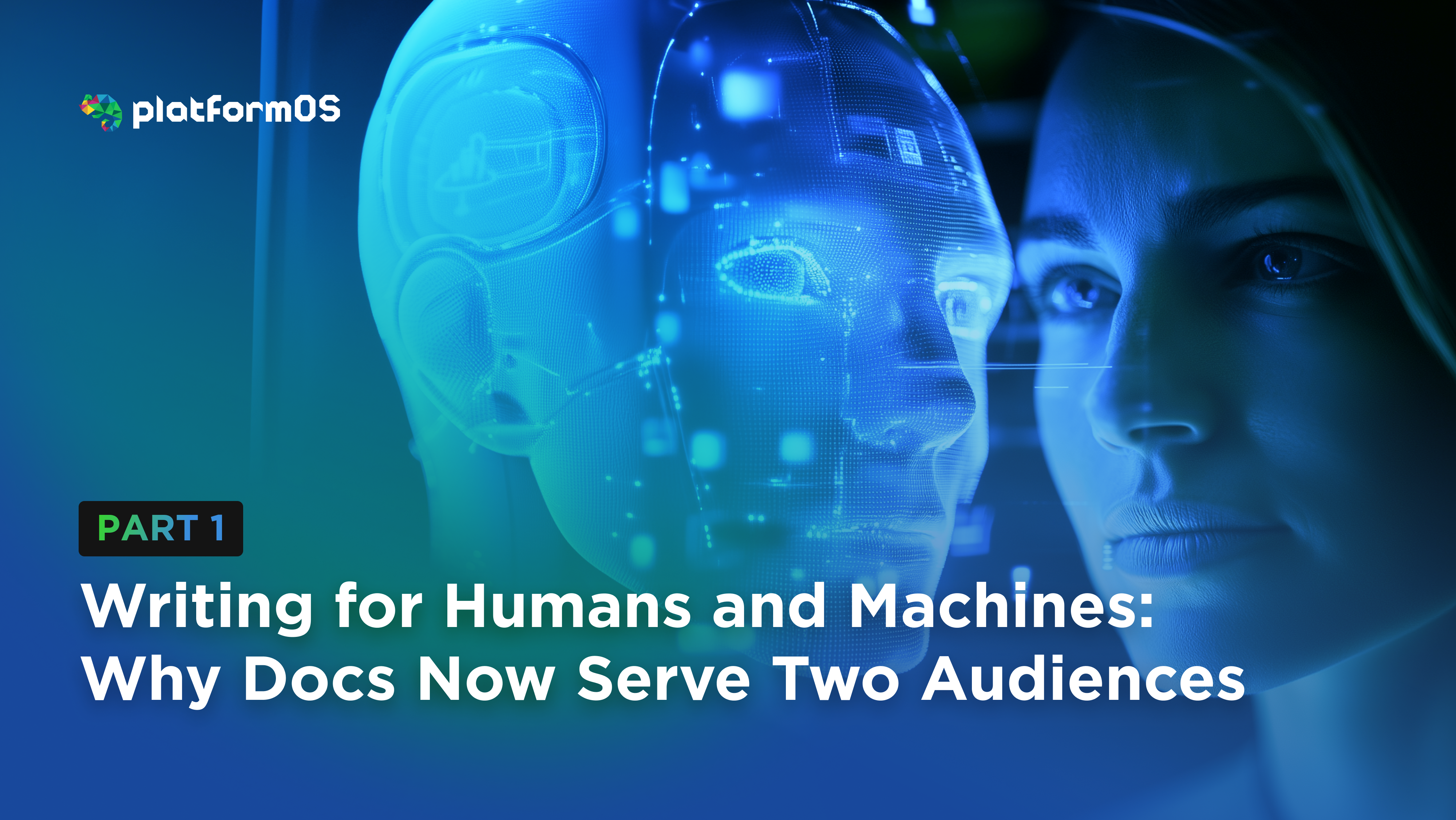





This article is part of our series on how documentation is evolving to serve both human readers and AI systems like search, chatbots, and LLMs.
Series overview:
Writing for Humans and Machines: Why Docs Now Serve Two Audiences (you’re here)
Structuring Documentation for AI Comprehension (coming soon)
From Consumer to Collaborator: How AI Supports Documentation Teams (coming soon)
10 Ways to Make Your Docs AI-Friendly (coming soon)
As technical writers, we’ve traditionally crafted content for human readers such as developers, end users, and internal teams. But today, there’s another audience we can’t afford to ignore: machines.
Search engines, AI assistants, summarizers, and chatbots are all consuming our documentation. They’re reading it, interpreting it, generating new content from it, and in some cases, even making decisions based on it. This shift is already reshaping how users interact with documentation and what they expect to get out of it.
We were inspired to explore this topic after reading Kapa.ai’s article Writing Best Practices, which outlines practical tips for making technical documentation easier for LLMs (Large Language Models) to understand and use. Their advice for keeping it concise, using clear headings, breaking content into smaller sections aligns with what many of us already know as good writing practice. But there’s more to this shift than structure and style.
This article kicks off a short series in which we’ll explore how documentation teams can adapt their thinking, tooling, and workflows to serve both human and machine audiences. We’ll explore how AI shifts our role as writers, makes structured content essential, and turns documentation into core product infrastructure rather than a support add-on.
Today’s documentation must meet the needs of two different consumers:
Humans who scan for clarity, skim for answers, and rely on examples
Machines (LLMs, semantic search, chatbots) that parse, index, and summarize your content
It’s not enough to write readable documentation. It needs to be parsable, clear enough in structure and semantics that a machine can understand the relationships, concepts, and workflows you’re describing.
As Fabrizio Ferri Benedetti points out on Passo.uno, this means labeling content, using semantic structure (like clearly defined headings and code blocks), and avoiding overuse of Q&A-style formats that limit reusability. Machines need more than good prose; they need patterns and signals.
When a chatbot answers a customer’s question with a quote from your documentation, that’s your content at work directly shaping the user experience.
If the documentation is too vague, too long, or poorly structured, the machine might summarize the wrong section or hallucinate an answer. Inconsistent terminology, missing context, or bloated multi-topic pages can easily confuse both readers and AI.
As the article Making Your Documentation AI-Friendly on Dev.to points out, LLMs often benefit from guidance just like search engines do. A recent example of this shift is the growing use of a proposed convention called llms.txt. Similar to how robots.txt helps search engines understand how to crawl a site, llms.txt guides large language models on which parts of your content are relevant for AI tools to ingest and respond to.
Originally introduced as a community proposal, it’s quickly gaining adoption across various platforms. While not yet a formal standard, it’s becoming a practical way to make your documentation more AI-friendly from the source.
Kapa.ai’s guide offers several best practices that we’re also applying in our own documentation work:
Use descriptive, hierarchical headings
Chunk content into smaller, reusable sections
Avoid ambiguous phrasing and acronyms without definitions
Prioritize clarity over cleverness
These practices help readers navigate your content and make it easier for machines to understand.
At platformOS, we go further by embedding these principles into our tooling and workflows. With DocsKit, we build structured, modular documentation that supports both readability and machine processing. In projects like the documentation sites for the Washington D.C. Department of Buildings, we apply these standards in real-world, high-impact contexts. And we use tools like EkLine, an AI-powered writing assistant, to review tone, clarity, and structure in real time, helping us maintain a consistent, human- and AI-friendly voice.
Writing documentation for AI isn’t about replacing human readers. It’s about supporting both. In this new landscape, your documentation serves as both a user guide and training data.
In the next article, we’ll take a closer look at how to structure your documentation to support AI comprehension, including practical tactics like content chunking, semantic markup, and modular design.
Ensure your project’s success with the power of platformOS.